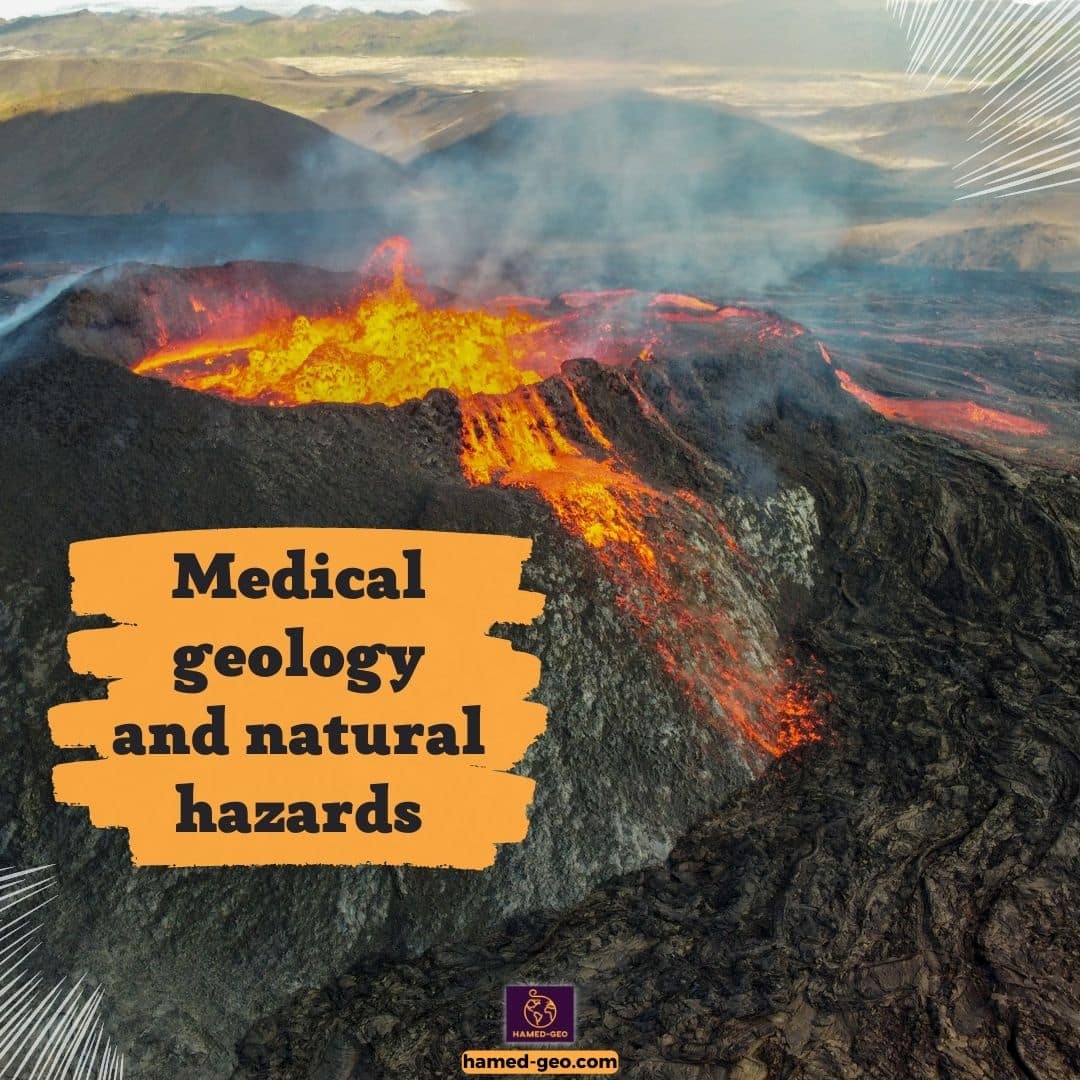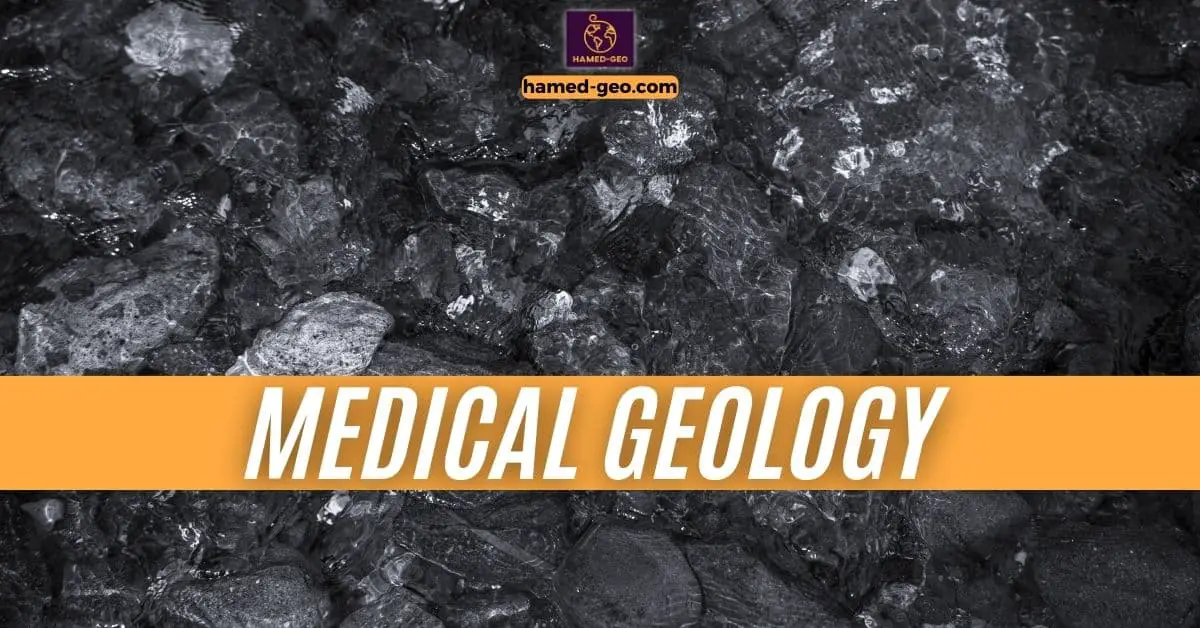Medical geology is an interdisciplinary field that examines the relationship between geology and human health. It is a relatively new field that has gained recognition in recent years due to the increasing importance of understanding how the environment impacts our health.
Medical geology encompasses a wide range of topics, including the study of geological materials and how they impact human health, the effects of geologic processes on water and air quality, and the impact of natural hazards on human health. By studying medical geology, researchers and health professionals can better understand how the environment affects human health and develop strategies to mitigate these impacts.
The importance of studying medical geology cannot be overstated. Understanding how geological materials and processes affect human health is crucial for public health planning, environmental risk assessment, and disease control. For example, medical geologists have played a key role in identifying areas with high levels of naturally occurring arsenic in groundwater, which can cause a range of health problems, including cancer and skin lesions. By identifying these areas, health professionals can work to reduce exposure and mitigate health risks.
Medical geology has a brief but important history. The field emerged in the 1990s as researchers began to recognize the link between geologic materials and human health. Since then, the field has grown and evolved, with researchers and health professionals from a variety of disciplines working together to better understand the relationship between geology and human health.
Medical geology and human health
Medical geology is a branch of geology that focuses on the relationship between geological materials and human health. This field is concerned with how the geology of an area can impact the health of its residents, and how geological materials can influence the quality of air and water. The study of medical geology has become increasingly important in recent years as we have become more aware of the ways in which our environment can impact our health.
One of the key ways in which geological materials can impact human health is through their composition. For example, some types of rock contain high levels of naturally occurring arsenic, which can leach into the water supply and cause health problems such as skin lesions, cancers, and cardiovascular disease. Similarly, exposure to radon gas, which is produced by the decay of uranium in rocks and soil, can increase the risk of lung cancer.
Geological materials can also impact human health by releasing toxic substances into the air. For example, volcanic eruptions can release large amounts of sulfur dioxide, which can cause respiratory problems and exacerbate existing conditions such as asthma. Similarly, exposure to dust and particulate matter from mining operations can cause respiratory problems and has been linked to an increased risk of lung cancer.
In addition to impacting human health directly, geological materials can also impact the quality of water and air. For example, mining operations can release pollutants into waterways, leading to the contamination of drinking water supplies. Similarly, volcanic eruptions can release large amounts of ash and other particulate matter into the atmosphere, leading to decreased air quality and increased health risks for nearby populations.
Despite the potential health risks associated with geological materials, there are also many benefits to studying medical geology. By understanding the ways in which geological materials can impact human health, researchers can develop strategies for mitigating the risks and improving the health of affected populations. For example, this might involve developing methods for monitoring water and air quality in areas with high levels of geological pollutants, or developing strategies for reducing exposure to radon gas in homes and workplaces.
By continuing to study the impacts of geological materials on human health, we can better understand the complex interplay between our environment and our health, and work to create healthier and more sustainable communities.
Medical geology and diseases
One of the key areas of study within the medical geology field is the impact of geological materials on the spread and prevalence of the disease. In this section, we will explore the different types of diseases caused by geological materials, provide examples of these diseases, and explain how they occur. We will also discuss the importance of understanding the geologic environment for disease control.
Types of Diseases Caused by Geological Materials
Geological materials can contribute to the spread of a wide range of diseases, including infectious diseases, chronic diseases, and cancers. These diseases can be caused by exposure to substances such as heavy metals, radioactive materials, or naturally occurring pathogens.
Examples of Diseases Caused by Geological Materials
One example of a disease caused by geological materials is mesothelioma, a type of cancer that is caused by exposure to asbestos fibers. Asbestos is a naturally occurring mineral that was widely used in building materials throughout the 20th century. When asbestos fibers are inhaled, they can cause damage to the lungs, leading to the development of mesothelioma and other respiratory diseases.
Another example of a disease caused by geological materials is arsenicosis, a condition caused by exposure to high levels of arsenic in drinking water. Arsenic is a naturally occurring element that can be found in groundwater in many parts of the world. When consumed over a long period of time, arsenic can cause skin lesions, cancers, and cardiovascular disease.
Explanation of How These Diseases Occur
The mechanisms by which geological materials can cause disease are complex and varied. Some diseases are caused by direct exposure to toxic substances, while others are caused by the transmission of pathogens through water or soil. In some cases, the geologic environment can create conditions that are conducive to the spread of disease, such as stagnant water or poor sanitation.
Importance of Understanding the Geologic Environment for Disease Control
Understanding the geologic environment is essential for effective disease control. By studying the geology of an area, researchers can identify potential sources of contamination and develop strategies for mitigating the risks associated with exposure to geological materials. For example, in areas where arsenic is present in groundwater, researchers may develop methods for treating drinking water to remove the arsenic. Similarly, in areas where asbestos is present in building materials, researchers may develop strategies for safely removing and disposing of these materials.
Applications of medical geology
Medical geology has a wide range of applications, including public health planning and environmental risk assessment. In this section, we will take a closer look at the different applications of medical geology, including its role in public health planning and environmental risk assessment, and provide examples of successful applications.
Use of Medical Geology in Public Health Planning
Medical geology can play an important role in public health planning by identifying potential health risks associated with exposure to geological materials. For example, medical geologists can work with public health officials to identify areas where drinking water may be contaminated with harmful substances such as arsenic or lead. By identifying these areas, public health officials can take steps to mitigate the risks to public health, such as implementing water treatment systems or providing alternative sources of drinking water.
Medical geology can also be used to assess the risk of exposure to geologic hazards such as landslides, volcanic eruptions, or earthquakes. By identifying areas where these hazards are more likely to occur, public health officials can develop strategies for mitigating the risks to public health, such as implementing early warning systems or developing emergency response plans.
Role of Medical Geology in Environmental Risk Assessment
Medical geology can also play an important role in environmental risk assessment. By studying the geology of an area, researchers can identify potential sources of contamination and assess the risks to human health associated with exposure to these contaminants. For example, medical geologists can study the levels of heavy metals in soil or water and assess the potential risks to human health associated with exposure to these metals.
Medical geologists can also play a role in assessing the risks associated with exposure to naturally occurring radioactive materials (NORMs). NORMs are radioactive materials that are found in soil, rock, and water, and exposure to these materials can pose a risk to human health. By studying the geology of an area and assessing the levels of NORMs present, medical geologists can help to identify areas where exposure to these materials may be a risk to public health.
Examples of Successful Medical Geology Applications
There have been many successful applications of medical geology in public health planning and environmental risk assessment. One notable example is the work that has been done to address the problem of arsenic contamination in drinking water in Bangladesh. Medical geologists identified areas where the groundwater was contaminated with arsenic and worked with public health officials to develop water treatment systems and provide alternative sources of drinking water. As a result of these efforts, the number of people in Bangladesh who are exposed to high levels of arsenic in drinking water has decreased significantly.
Another successful application of medical geology is the use of geologic mapping to identify areas at risk of landslides. In the Philippines, medical geologists worked with local communities to map areas prone to landslides and develop early warning systems to alert residents of potential hazards. This has helped to reduce the number of deaths and injuries from landslides in the region.
Medical geology has also been used to assess the risks associated with exposure to lead in urban environments. In the United States, medical geologists have worked with public health officials to map areas where lead-based paint is a problem and develop strategies to mitigate the risks to public health, such as implementing lead abatement programs and educating the public on the dangers of lead exposure.
By studying the geology of an area, researchers can identify potential health risks associated with exposure to geological materials and develop strategies to mitigate these risks. With continued research and application of medical geology, we can work towards a healthier and safer environment for all.
Medical geology and natural hazards

Medical geology is particularly relevant when it comes to natural hazards caused by geologic processes, which can have a significant impact on human health. In this section, we will explore the connection between medical geology and natural hazards, examining the ways in which geological materials can cause natural hazards and discussing the impacts of these hazards on human health.
Explanation of Natural Hazards Caused by Geologic Processes
Natural hazards caused by geologic processes can be divided into several categories, including earthquakes, volcanic eruptions, landslides, and tsunamis. These hazards can be caused by a variety of geological materials and processes.
Earthquakes, for example, are caused by the movement of tectonic plates, which can result in seismic waves that cause shaking and ground rupture. Volcanic eruptions occur when magma, gas, and ash are released from a volcano, often leading to ashfall, pyroclastic flows, and lahars. Landslides can be triggered by a variety of factors, including heavy rainfall, earthquakes, and volcanic activity. On the other hand, tsunamis are caused by underwater earthquakes or volcanic eruptions, which can generate large waves that can cause significant damage when they reach the shore.
Examples of How Geological Materials Can Cause Natural Hazards
Geological materials can also cause natural hazards in a variety of ways. For example, the type of rock and soil in a given area can determine its susceptibility to landslides. Certain types of rock, such as shale and clay, are more prone to landslides than others, while the presence of water can also increase the likelihood of landslides.
Similarly, volcanic eruptions can be caused by the composition of the magma and the type of volcano. Volcanoes that are composed of viscous magma, such as stratovolcanoes, are more likely to produce explosive eruptions, while shield volcanoes, which are composed of more fluid magma, are more likely to produce effusive eruptions.
The location of geological materials can also play a significant role in natural hazards. For example, faults that are located in urban areas can cause significant damage during earthquakes, while the location of volcanoes near populated areas can put people at risk of volcanic hazards such as pyroclastic flows and lahars. The presence of certain minerals in soil and water can also lead to health hazards, such as exposure to toxic metals like arsenic and lead.
Impacts of Natural Hazards on Human Health
The impacts of natural hazards on human health can be significant and wide-ranging. Earthquakes, for example, can cause buildings and infrastructure to collapse, leading to injuries and fatalities. Volcanic eruptions can release toxic gases and ash into the air, which can cause respiratory problems and other health issues. Landslides and tsunamis can cause extensive damage to homes, businesses, and infrastructure, leading to displacement, injury, and economic losses.
Medical geology seeks to understand these interactions between geological materials and human health, in order to help mitigate the impact of natural hazards on human populations. By studying the composition and properties of geological materials, as well as the ways in which they interact with human populations, medical geologists can help to identify and manage natural hazards, ultimately protecting human health and promoting sustainable development.
Medical geology and mineral resources
One area where Medical geology has significant implications is in the extraction and use of mineral resources. Minerals play a crucial role in the global economy and are used in a wide range of applications, from building materials to electronics. However, the extraction and use of these resources can also have significant impacts on human health and the environment.
Geological materials, such as rocks and minerals, are used as sources of mineral resources. The extraction of these resources involves mining, which is the process of removing minerals from the earth’s surface or underground. Different types of minerals are extracted using different techniques, including open-pit mining, underground mining, and dredging.
Mineral resources are used in a wide range of applications, including construction, electronics, and energy production. For example, copper is used in electrical wiring, while the iron is used in the production of steel. Minerals are also used in medical applications, such as titanium in medical implants and lithium in psychiatric medication.
While mineral resources are essential for many industries, their extraction and use can also have significant impacts on human health. For example, exposure to certain minerals and metals can lead to health problems, including respiratory illnesses and cancer. Silica, a common mineral found in rocks and soil, can cause lung cancer when inhaled as dust during mining or construction activities. Exposure to lead, used in batteries and electronics, can lead to developmental and neurological problems in children.
In addition to the health impacts of mineral extraction, there are also significant environmental risks associated with mining. Mining can lead to the destruction of habitats and ecosystems, as well as the release of toxic substances into the environment. For example, the production of aluminum involves the use of large amounts of energy, which contributes to greenhouse gas emissions and climate change.
Medical geology seeks to understand the interactions between mineral resources and human health and to develop strategies for managing the impacts of mineral extraction. This includes identifying safer and more sustainable mining practices, as well as developing technologies for recycling and reusing minerals. By considering the health and environmental impacts of mineral extraction, medical geology can help to promote sustainable development and protect human health.
Medical geology and environmental contamination
One area of particular concern is environmental contamination caused by geological materials. Geological materials, such as rocks, soil, and minerals, can contain natural contaminants that have the potential to harm human health and the environment.
Environmental contamination caused by geological materials can occur in several ways. One common way is through the release of heavy metals, such as lead, mercury, and cadmium, into the environment. These metals are often present in geological materials and can be released through natural processes, such as weathering and erosion, or through human activities, such as mining and industrial activities.
Another way that geological materials can cause environmental contamination is through the release of radionuclides, which are radioactive isotopes that can cause cancer and other health problems. Radionuclides can be present in geological materials, such as uranium and thorium, and can be released through mining and other industrial activities.
Environmental contamination caused by geological materials can have significant impacts on human health. For example, exposure to lead, which can be released through mining and industrial activities, can lead to developmental and neurological problems in children. Mercury, which can be released from coal-fired power plants and other industrial activities, can cause neurological damage and other health problems.
Radionuclides can also have significant health impacts. Exposure to radon, a naturally occurring radioactive gas that can be released from soil and rocks, can cause lung cancer. Uranium and other radionuclides can also cause cancer and other health problems.
There are numerous examples of environmental contamination caused by geological materials. For example, the Flint water crisis in Michigan was caused by lead contamination in the water supply, which was released through aging infrastructure and water treatment processes. The Ok Tedi copper mine in Papua New Guinea caused significant environmental contamination through the release of mine waste into local rivers, which contained high levels of heavy metals and other contaminants.
Environmental contamination caused by geological materials can also have significant impacts on ecosystems. For example, the Chernobyl nuclear disaster in Ukraine in 1986 caused significant environmental contamination, which has led to ongoing health problems and environmental damage in the surrounding area.
To address the impacts of environmental contamination caused by geological materials, medical geology seeks to understand the interactions between geological materials and the environment, as well as the health impacts of environmental contamination. This includes developing strategies for mitigating environmental contamination, such as through the use of cleaner industrial processes and better waste management practices. By addressing the impacts of environmental contamination caused by geological materials, medical geology can help to protect human health and the environment.
Medical geology and climate change
One area of increasing concern is the role of geologic processes in climate change and the impacts of climate change on human health. Geologic processes can influence climate change in several ways, including the release of greenhouse gases and the modification of the earth’s surface.
One significant way that geologic processes influence climate change is through the release of greenhouse gases, such as carbon dioxide and methane. These gases are released through natural processes, such as volcanic activity and the decay of organic matter, as well as through human activities, such as fossil fuel combustion and deforestation. The release of greenhouse gases contributes to the warming of the earth’s atmosphere, which can have significant impacts on human health and the environment.
Climate change can also have significant impacts on human health. For example, rising temperatures can lead to heat-related illnesses and deaths, especially in vulnerable populations such as the elderly and those with pre-existing health conditions. Changes in precipitation patterns and increased frequency of extreme weather events can lead to flooding, drought, and other environmental disasters, which can have significant impacts on public health.
Medical geology can play a role in addressing climate change by developing strategies for mitigating the impacts of geologic processes on climate change, as well as developing strategies for adapting to the impacts of climate change on human health. This includes developing cleaner energy sources, such as renewable energy, and promoting sustainable land use practices to reduce greenhouse gas emissions. It also includes developing strategies for mitigating the impacts of extreme weather events and other climate-related disasters, such as through improved disaster response and preparedness.
Additionally, medical geology can play a role in addressing the impacts of climate change on human health through research and education. By studying the impacts of climate change on human health and developing strategies for mitigating these impacts, medical geology can help to protect public health and promote sustainable development.
Medical geology and cultural practices
One area that medical geology has explored is the use of geological materials in cultural practices. Throughout human history, geological materials have played a significant role in cultural practices, often serving as a source of art, decoration, and healing.
One way that geological materials are used in cultural practices is as a source of art and decoration. For example, many cultures have used gemstones and crystals to create jewelry, carvings, and other decorative items. These materials are often valued for their beauty and perceived healing properties.
Geological materials have also been used in cultural practices as a source of medicine and healing. Many traditional healing practices use geological materials, such as rocks, minerals, and hot springs, to treat a variety of illnesses and health conditions. For example, hot springs have been used for centuries to treat various ailments, including arthritis, skin conditions, and respiratory disorders.
However, there are potential health risks associated with some cultural practices that involve geological materials. For example, certain gemstones and minerals can contain toxic substances, such as lead or asbestos that can be harmful if ingested or inhaled. In addition, some traditional healing practices that use geological materials may not have scientific evidence to support their effectiveness or safety.
Furthermore, the mining and extraction of geological materials used in cultural practices can also have negative impacts on human health and the environment. Mining can lead to the release of toxic substances into the air and water, which can have significant health impacts on nearby communities. In addition, the exploitation of geological materials can have negative impacts on the cultural heritage of local communities, as well as on the environment.
The use of geological materials in cultural practices is an important area of study in medical geology. While these materials have played a significant role in human history and culture, it is important to consider the potential health risks associated with their use. Additionally, efforts should be made to ensure that the extraction and use of geological materials are done in a sustainable and culturally sensitive manner that respects the rights and needs of local communities.
Future of medical geology
The future of medical geology holds immense potential for new discoveries and developments. As our understanding of the relationship between geological materials and human health continues to expand, we are likely to see new applications of medical geology in areas such as environmental management, public health, and even medical treatment.
One area of potential for medical geology is the development of new therapies for various health conditions. For example, recent research has shown that some naturally occurring geological materials, such as zeolites, may have potential applications in cancer treatment. Zeolites are minerals that can selectively bind to certain types of cancer cells, potentially making them a valuable tool in targeted cancer therapies.
Additionally, medical geology has the potential to play an increasingly important role in environmental management. As we continue to face challenges such as climate change and environmental degradation, the insights provided by medical geology can help us better understand the impacts of these changes on human health. For example, medical geologists can help identify areas where environmental contamination may pose a risk to public health, and develop strategies to mitigate those risks.
To realize the potential of medical geology, it is important that we continue to invest in research and education in this field. This includes not only studying the relationship between geological materials and human health but also developing new techniques and technologies for measuring and mitigating environmental risks. As the field of medical geology continues to evolve, it will be important for researchers and practitioners to stay up-to-date on the latest discoveries and developments, and to collaborate across disciplines in order to address the complex challenges we face.
In conclusion, looking to the future, there is tremendous potential for new discoveries and developments in medical geology. As our understanding of geologic processes and their impact on human health continues to evolve, we can expect to see new insights and solutions emerge. To ensure that we stay at the forefront of this field, continued research and education are critical.



